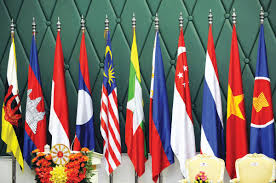
ASEAN states may not have been entirely successful in resolving some of their internal disagreements, or in transcending the more particularistic goals of the nation to support more wholeheartedly the region’s collective interest. There are also questions about how serious the governments are in pursuing institutional reform and legalization. They have at least been quite successful in the establishment of multilateral security cooperation mechanisms that now form part of the foundation of regional security order. However the challenge to accomplish such security alliance is to transform its role from that of a convenor to that of an agenda-setter for Southeast Asian security, which requires more unity of vision and purpose, and greater capacity as well as credibility. It is failure to produce joint communiques criticizing China’s claims in the South China Sea, responds to crisis in Myanmar, its lack of progress in economic integration are some examples that remain long term challenges keeping them apart.
VIDEO
The Southeast Asia has been hosting to one of the busiest trading route in the world. It hosts trillions of dollars of goods passing between Northeast Asia exporting nations like China, South Korea, Japan, Taiwan and consumer markets in Europe, North America and suppliers in Middle East. All these goods pass via the maritime chokepoints which would have catastrophic effects if blocked due to any reason. Therefore, the region has paramount strategic value to regional powers including global powers like China and US.
However the region geography creates problems for integration. The wide group of islands, difference ethnic and social conflicts, vulnerability to outsiders and resistance to centralized rule are geographical problems. According to Asian Development Bank, the region needs $1.5 trillion on infrastructure per year during the next decade to sustain its economic growth momentum. However, there are other problems even if the funds might be created. Governments are always busy consolidating power while it keeps them skeptical to develop deeper ties with its neighbors. While it is the situation, it also keeps ASEAN to be an economical power more than security apparatus and will likely to be in this path for a long time. What does it mean for the region? Let’s give a very simple example…
The South China Sea is believed to be rich in natural gas, oil & fish, although there are conflicting estimates about the size of the deposits. China has passed a law in February 1992 claiming almost entire South China Sea which creates the conflict among the states which have located in the region. China wants to solve the problems by entering bilateral negotiations but not multilateral negotiations since it would have given an edge over its neighbors due to huge size of military and economic power (it is the same strategy Russia has been following on some EU countries by proposing attractive economic incentives. Unlike Russia, China has all means to persuade its strategy through its vast resources). The NATO gives the members to share a strong unity and force against Soviet aggression (today Russian aggression) including mechanism to halt the internal conflicts with its members. On the other hand, ASEAN has never been a security pact. It relied on national security based on the doctrine of “national resilience” and its regional extension. In each meeting, it always has some kind of “unbinding” statements for member states. And it is because the national sovereignty is still the most essential value in Southeast Asia security discourse even though it came under pressure in the aftermath of the Asian financial crisis.
At this point, China is aware that those regional countries need China as much as China needs them. China would continue offering bilateral agreements to those countries that are relatively struggling with economy after corona pandemic. While doing so, China would intend to create ambiguity among those nations to create a united confront against China. While US starts deploying its forces in the region, most of them feel this deployment as all the better since it helps them to preserve the regional balance of power on their behalf without spending much energy.
In this regard, we should consider why US works hard to create such alliances. US knows that it would take time and need huge resources to spend if such alliance would gather by time. Therefore, US is not in a hurry but works with certain strategy in its mind to contain rising China in the region. It is because the maritime chokepoints are vital to US interests. US considers China’s ultimate strategy to have control of maritime chokepoints by time. That means less control in the region, less trade contracts with rest of the worlds, loss of market share for US suppliers and manufacturers. Therefore, US deploys to Asia not only to keep its interests protected but also to create alliances like NATO in Asia.
Such alliance might emerge in future is yet to be seen. However, it is certain that China and US would act to achieve their goals. China would keep an eye on ASEAN member states not to form a united form against China while US would start developing not only security umbrella but also bringing financial resources to ASEAN members to attract them. Meanwhile it is likely to see most ASEAN nations to enjoy the competition between China and US. However, make no mistake, the stress on regional equilibrium will only be intensified as the tension between US and China increase.

